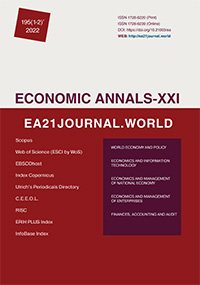Central and Eastern European regional centers in the focus of urban rankings and urban indexes
Central and Eastern European regional centers in the focus of urban rankings and urban indexes
Author(s): Petra Kinga Kézai, Rámháp SzabolcsSubject(s): Economy, National Economy, Business Economy / Management, Rural and urban sociology
Published by: Institute of Society Transformation
Keywords: Regional Centers; Urban Research; City Rankings; City Index; Central and Eastern Europe;
Summary/Abstract: The relevance of the paper is predetermined by the fact that nearly 75% of the population in the European Union live in cities, so the European Union is committed to making cities more sustainable. Thus, recent years have seen an increasing need for studies on urban indexes measuring European cities as well as those on the evaluation of the indexes. The purpose of this paper is to prove that Central and Eastern European medium-sized cities as regional centers are an under-researched area in social science research. While one typical trend of this research is ranking based on various aspects as well as the determination of leading cities, the regional centers of Central and Eastern European countries are only tangentially included in this research. The research objectives: The analysis examines 94 regional centers in ten Central and Eastern European countries (Austria, Bulgaria, Czech Republic, Croatia, Hungary, Poland, Romania, Serbia, Slovakia, and Slovenia) with regional functions at NUTS2 level based on a total of 41 different economic indexes and rankings. The research was based on the Eurostat Urban Audit database and the keyword search engine of scientific search engines such as Web of Science, Science direct, and Google Scholar. The research question: Which Central and Eastern European regional centers are examined by the different city rankings and indexes? The research results and conclusions are the following: 1) As a result of the research, it was found that out of the 94 regional centers, the most examined cities are Krakow, Wroclaw and Brno. A randomly selected city is included in only 11% of the studied rankings and indexes. 2) However, half of the Central and Eastern European capitals are considered areas for city rankings and indexes. The most studied capitals are, ranked in order of focus; Budapest and Prague, Vienna, Ljubljana, Bratislava, Sofia, Warsaw and Zagreb. 3) Based on the correlation analysis, we found a strong relationship between two indicators (Cultural Creative Cities Index and Smart Cities Index) which suggests that it would make sense to explore further relationships for which it is indispensable to have the right quality and quantity of data. All in all, it would be worthwhile creating an economic index measuring the performance of Central and Eastern European regional centers which could help regional and city governments as well as potential investors get an up-to-date and comprehensive picture of regional centers in the region.
Journal: Економічний часопис - ХХІ
- Issue Year: 195/2022
- Issue No: 01+02
- Page Range: 26-35
- Page Count: 9
- Language: English

